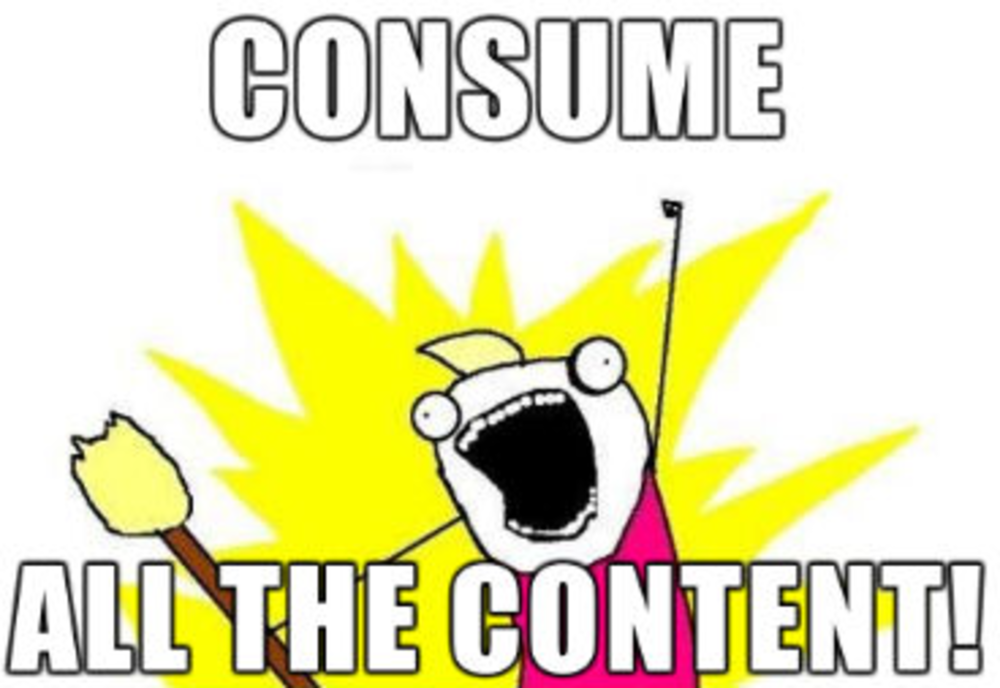The history of man started with cave drawings, strolled through some metal-centric ages—Bronze, Iron, et al.—and then made its way into the Industrial Age about 250 years ago. The personal computer hit in the late 70s, the Information Age revved up, we all got desktops and laptops and phones and tablets and mini tablets, and here we find ourselves today. Something like that, anyway.
According to IBM, we create about 2.5 quintillion bytes of data every day, which sounds like the made up number of dollars an evil villain asks for in a Saturday morning cartoon.
“As a consumer of data, I’m experiencing a bit of Big Data overload,” said Alton Adams, national lead of the customer strategy and growth group at KPMG, speaking at the Media Technology Summit last week in New York City.
For the typical consumer, the amount of content out there can feel a little overwhelming. All you hear marketers and agencies say, over and over again, is how the digital landscape has transformed them into publishers. There’s the conception that all people want is content, content, and more content and it’s up to the content producers to be in a continual state of red alert to fill the gaping maws of consumers with the content they crave.
There’s no doubt consumers want content, but it’s not just any content they’re looking for. Consumers want relevant content, because otherwise there just isn’t enough time in the day. And that makes the marketer’s job a little tricky, because soon it’s not just going to be about content; it’s going to be about personalized content.
The word of the day is convergence, said Lisa Caputo, CMO at insurance company Travelers. The lines between paid, owned, and earned are blurring together like the semi-concentric circles in a tie-dyed t-shirt. But Caputo sees the new media landscape as an opportunity for smart marketers willing to take the plunge.
“What’s pivotal for us and for any brand is to think of ourselves as storytellers, and we’re finding creative ways to tell stories around our content through an omnichannel approach,” Caputo said. “In a world that’s converging, it’s important to put content out there in the right way and at a time when customers and prospective clients actually want it.”
For example, Travelers, in partnership with The Weather Company, uses Facebook’s Open Graph to help insurance agents track people who might be in a storm’s path, and to share tips with those affected by bad or dangerous weather.
In a sense, publishers, née marketers, need to create the content—but they also need to manage its flow.
As Sean Coar, group VP of strategy at Time Warner Cable, put it: “We can’t forget that content needs to be curated.”
In other words, it’s a matter of quantity and quality rather than quantity of quantity.
The summit’s de facto MC Shelly Palmer, host of DigitalLiving, summed it up thusly: “Today we’re heterogeneous in the most serious way.”








